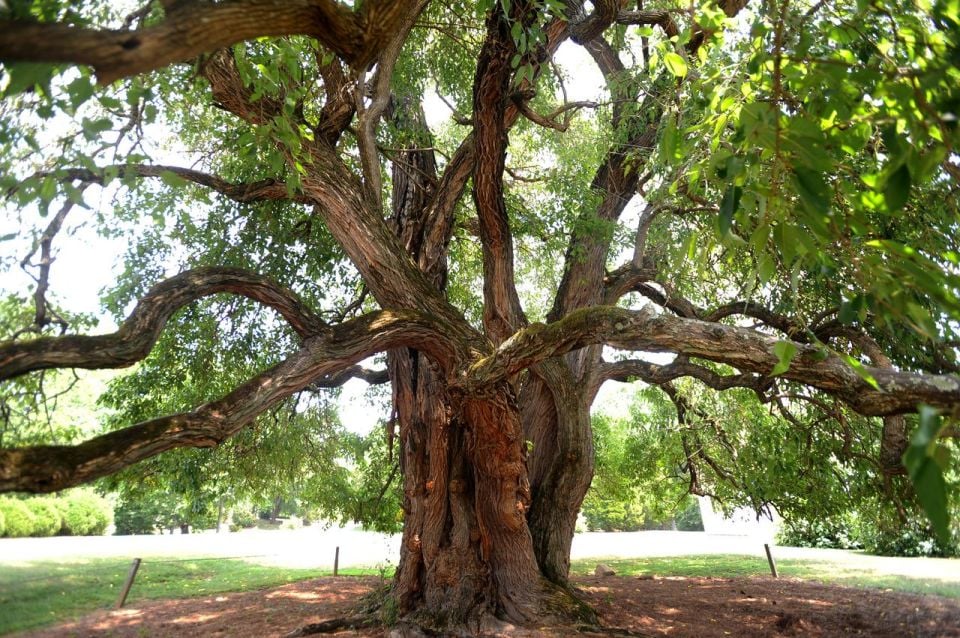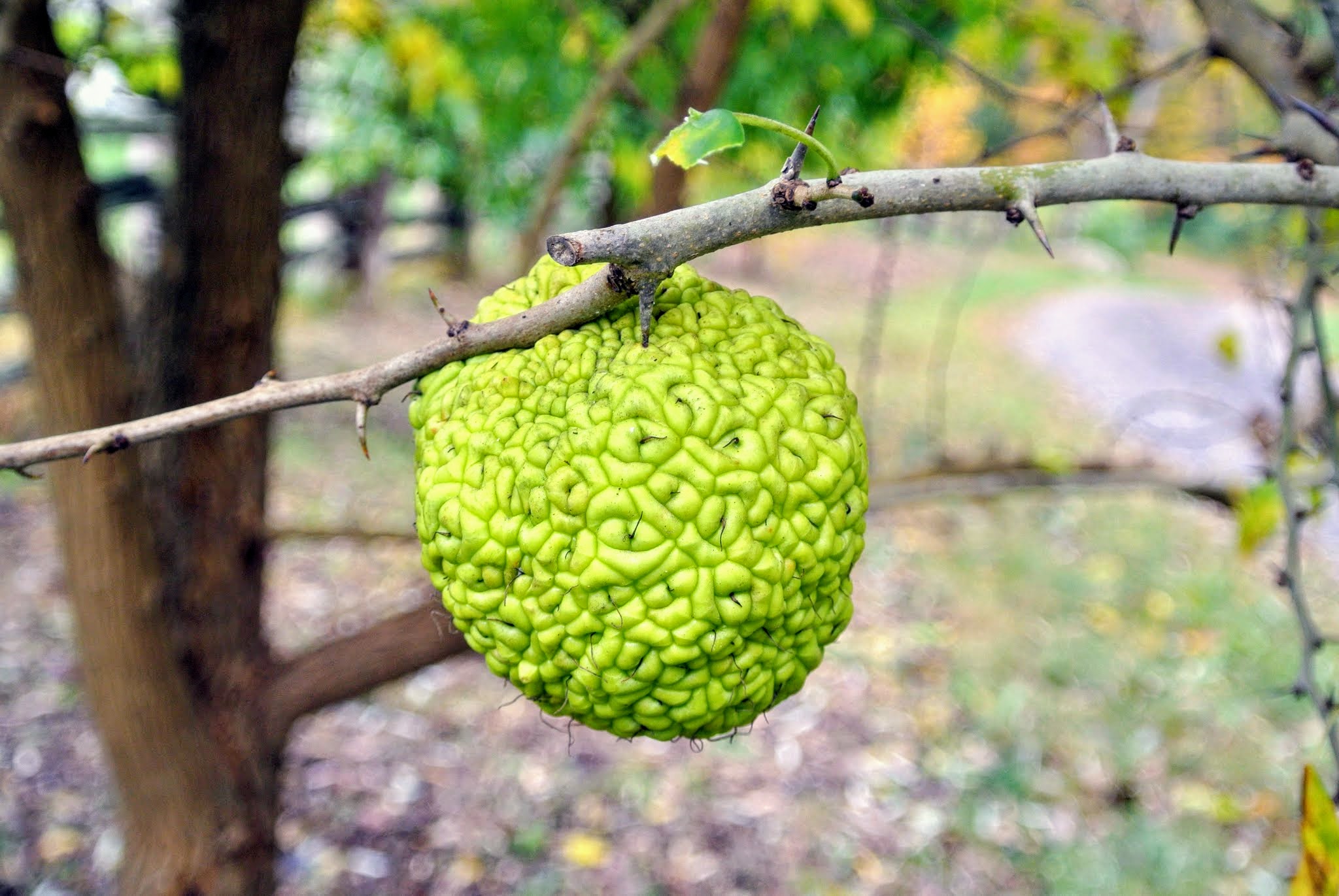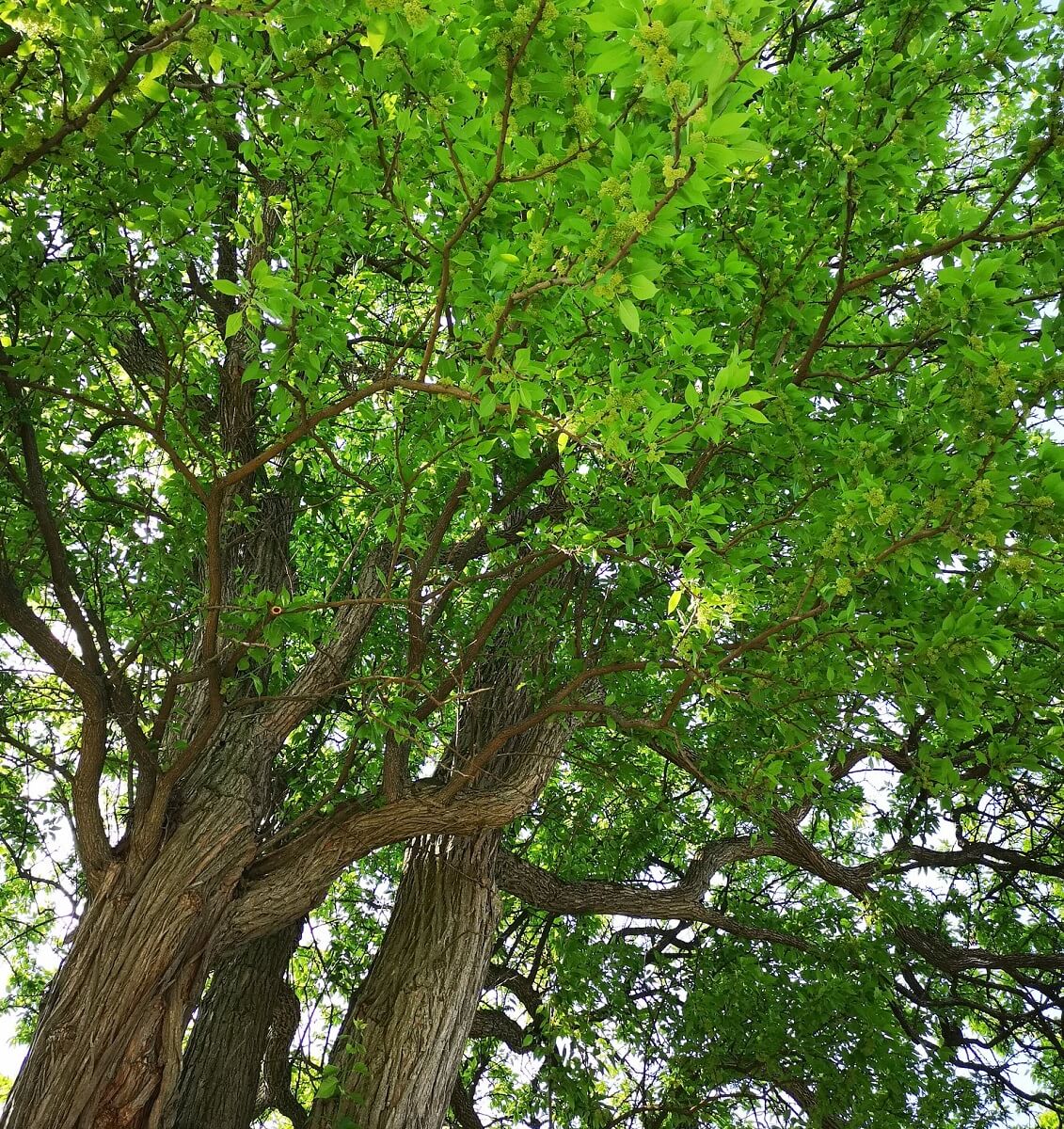The Osage Orange Tree: Unveiling America's Resilient Living Fence
Step into the fascinating world of the Osage orange tree, a plant steeped in American history and ecological significance. Often recognized by its distinctive, brain-like green fruit and thorny branches, this remarkable species, known scientifically as *Maclura pomifera*, is far more than just an unusual sight. From its vital role in Native American cultures to its transformative impact on prairie settlement, the Osage orange tree has shaped landscapes and livelihoods for centuries. This article delves deep into the characteristics, history, uses, and ecological importance of this versatile and valuable plant, providing a comprehensive guide for anyone curious about this truly unique botanical specimen.
Beyond its peculiar appearance, the Osage orange tree embodies resilience and utility. Native to the central United States, particularly the rich soils of Texas, Oklahoma, Arkansas, and Missouri, it has adapted to various environments, thriving especially near prairies, riverbanks, and woodlands. Its robust nature and multifaceted applications have cemented its place in both natural ecosystems and human endeavors. Join us as we explore why this thorny, fruit-bearing tree continues to be a subject of intrigue and a valuable asset in today's world.
Table of Contents
- A Historical Journey: The Osage Orange Tree's Legacy
- Identifying the Osage Orange Tree: Distinctive Features
- The Peculiar Fruit of the Osage Orange Tree
- The Unyielding Strength of Osage Orange Wood
- Growing and Caring for the Osage Orange Tree
- The Osage Orange as a Living Fence: A Prairie Revolution
- Modern Uses and Ecological Benefits of the Osage Orange
- Environmental Concerns and Management
A Historical Journey: The Osage Orange Tree's Legacy
The history of the Osage orange tree is as rich and complex as its gnarled branches. This tree has played a pivotal role in the development of the American landscape, intertwined with the lives of both indigenous peoples and early European settlers. Understanding its past helps us appreciate its enduring value today.
The Naming of the Osage Orange
The common name "Osage orange" itself is a testament to its historical roots. It is widely believed that in the 16th and 17th centuries, the tree was given this name by the Osage Indian Nation. This powerful Native American tribe, indigenous to the Ohio and Mississippi River valleys, recognized the tree's unique characteristics and its resemblance to an orange, albeit one that is distinctly inedible. This naming convention highlights the deep connection between the tree and the people who first utilized its remarkable properties.
Native American Ingenuity and the Osage Orange
Long before European settlement, the Osage orange tree was a cornerstone of Native American life, particularly among the Osage, Comanche, and Wichita tribes. Its most prized attribute was its incredibly hard and flexible wood. This wood was indispensable for crafting bows, which were crucial for hunting and warfare. The superior quality of bows made from Osage orange wood was renowned, making the tree a valuable resource and a subject of trade among various tribes. This early recognition of its strength and durability laid the foundation for its later widespread adoption by settlers.
Identifying the Osage Orange Tree: Distinctive Features
The Osage orange tree is an unusual tree, easily recognizable once you know what to look for. It is a small to medium-sized tree, characterized by its thorny branches, which serve as a natural deterrent. The thorns are sharp and can be quite formidable, especially on younger growth. Its leaves are simple, alternate, and glossy green, turning a vibrant yellow in the autumn. However, the most unmistakable feature, and often the first thing people notice, is its fruit.
Beyond the fruit, the bark of a mature Osage orange tree is deeply furrowed and orange-brown, adding to its rugged appearance. The tree's overall structure is often irregular, especially when grown in open areas, with a spreading crown. Its resilience allows it to thrive in various conditions, making it a common sight in its native range and beyond. Learning to identify this tree is key to understanding its presence in the landscape and appreciating its unique attributes.
The Peculiar Fruit of the Osage Orange Tree
Perhaps the most iconic feature of the Osage orange tree is its fruit. These large, hard, green fruits are wrinkled balls the size of grapefruit, bearing a striking resemblance to a brain or a convoluted orange. Despite their appearance, it's crucial to remember that this distinctive fruit is not edible. While it might look tempting, consuming it can lead to digestive upset. This is a vital piece of information, especially for those encountering the tree for the first time.
The fruit's texture is firm and somewhat rubbery, and when cut or broken, it exudes a milky sap. While not for human consumption, these fruits have historically been credited with the ability to repel pests, leading some to place them in basements or near foundations to deter insects. However, scientific evidence for this pest-repelling quality is mixed, and it's not a universally accepted method of pest control.
Caution: The Milky Sap
A significant point of caution regarding the fruit of the Osage orange tree is the milky sap it contains. This sap can produce dermatitis in humans, causing skin irritation, redness, or itching upon contact. Therefore, it is advisable to handle the fruits with gloves, especially if you have sensitive skin. This characteristic underscores the importance of proper identification and awareness when interacting with the Osage orange tree, ensuring safety for yourself and others.
The Unyielding Strength of Osage Orange Wood
If the fruit is the most distinctive visual, the wood is arguably the most valuable asset of the Osage orange tree. The trees’ yellow wood is renowned for its exceptional strength and flexibility. It is so dense that it is immune to termites, a remarkable quality that contributes significantly to its longevity and durability. This natural resistance to pests and decay makes Osage orange wood incredibly valuable for outdoor applications.
As mentioned, Native Americans utilized this wood for crafting superior bows. Its density and resilience meant that bows made from Osage orange could withstand immense tension and deliver powerful shots. Today, this robust wood continues to be highly prized. It is still used for fence posts, tool handles, and even for decorative purposes due to its beautiful grain and vibrant color. The enduring demand for its timber is a testament to its unparalleled strength and resistance to the elements.
Growing and Caring for the Osage Orange Tree
Growing an Osage orange tree is fast and easy, making it an attractive option for various landscaping and agricultural purposes. This tree is remarkably adaptable and can tolerate a wide range of soil conditions, though it generally prefers well-drained soil. Its rapid growth rate means it can establish quickly, providing benefits such as shade or wind protection in a relatively short period.
Once established, the Osage orange tree is quite low-maintenance. It is drought-tolerant and generally resistant to most common diseases and pests. However, like any plant, it benefits from proper care, especially during its initial growth stages. Ensuring adequate water during dry spells and protecting young trees from extreme conditions can help them thrive and reach their full potential.
Hardiness Zones and Climate Considerations
Osage orange trees are hardy in USDA zones 4 through 9, meaning they can withstand a wide range of temperatures. This broad hardiness range speaks to their adaptability and makes them suitable for cultivation across much of the United States. Native to regions spanning southeast Oklahoma, Texas, and Arkansas, this woody tree thrives in these warmer climates.
However, while resilient, Osage orange trees usually prefer warmer climates and may suffer in areas with harsh winters. If your region experiences a harsh winter, you must provide some extra protection from cold drafts or breezes. This could involve mulching around the base of young trees or planting them in sheltered locations. Understanding these climatic preferences ensures the successful establishment and long-term health of your Osage orange tree.
The Osage Orange as a Living Fence: A Prairie Revolution
The most significant historical impact of the Osage orange tree, beyond its use for bows, was its role in revolutionizing fencing in the American prairies. Before the advent of barbed wire, farmers on the vast, treeless plains faced a significant challenge: how to enclose their land and livestock. Traditional wooden fences were expensive and difficult to construct due to the scarcity of timber.
The Osage orange tree provided a natural, sustainable, and incredibly effective solution. Its thorny branches, dense growth habit, and resilience made it an ideal candidate for creating impenetrable living fences, or "hedgerows." By planting these trees closely together and pruning them regularly, farmers could create formidable barriers that livestock could not breach. By 1855, Osage orange made fencing entire prairie farms practical, and the practice had spread rapidly throughout the prairie states to most of the eastern states. This innovation transformed agriculture, allowing for the efficient management of land and livestock, and played a crucial role in the westward expansion and settlement of the United States.
However, the reign of the Osage orange hedge as the primary fencing material was relatively short-lived. Then the invention of woven and barb wire caused the hedge row to be used less from 1875 forward. The ease and lower cost of installing wire fences quickly overshadowed the labor-intensive process of maintaining hedgerows. Despite this shift, the legacy of the Osage orange as the "living fence" remains a fascinating chapter in American agricultural history.
Modern Uses and Ecological Benefits of the Osage Orange
Even with the decline of its use as the primary fencing material, the Osage orange tree continues to be a valuable plant in modern times. Today, Osage orange trees are still used for fence posts due to their incredible durability and resistance to rot. Their natural immunity to termites makes them a superior choice for ground contact applications, often outlasting treated lumber.
Beyond fencing, the plant is often trained as a hedge or planted as a windbreak. Its dense, thorny growth provides excellent protection against strong winds and can create effective visual and physical barriers. This makes it useful for property lines, around orchards, or to protect homes from harsh weather conditions. Its ability to thrive in tough conditions also makes it a good candidate for erosion control, especially along riverbanks and disturbed lands where it can help stabilize soil.
Ecologically, the Osage orange tree provides habitat and food for various wildlife, despite its inedible fruit for humans. The dense canopy offers shelter for birds, and its flowers provide nectar for pollinators. While the large fruits are not typically consumed by most North American animals, squirrels and other rodents may gnaw on them to access the seeds within. Its deep root system also helps improve soil structure and prevent erosion, contributing to overall ecosystem health.
Environmental Concerns and Management
While the Osage orange tree is generally robust, understanding its potential challenges and management needs is important. One documented observation notes that the severity of damage was greatest where weeds were most abundant (26). This suggests that competition from weeds can impact the tree's health and growth, especially when young. Proper weed control around newly planted or young Osage orange trees can significantly contribute to their vigor and establishment.
Furthermore, while native to specific regions, the Osage orange tree has been widely planted outside its natural range due to its utility. In some areas, particularly where conditions are favorable, it can become quite vigorous and potentially spread, though it is not typically considered an aggressive invasive species in most contexts. Monitoring its spread and managing its growth, especially in natural areas, can be part of responsible land stewardship.
Overall, the Osage orange tree remains a resilient and valuable species. Its ability to adapt to diverse environments, coupled with its historical and ongoing utility, ensures its continued presence in the American landscape. Understanding its characteristics, uses, status, distribution, establishment, pests, and environmental concerns allows for informed management and appreciation of this unique botanical marvel.
Conclusion
From its humble beginnings as a vital resource for Native American bowyers to its pivotal role in shaping the agricultural landscape of the American prairies, the Osage orange tree stands as a testament to nature's ingenuity and resilience. We've explored its distinctive, inedible fruit with its cautionary milky sap, the unparalleled strength of its termite-resistant wood, and its remarkable adaptability across various USDA hardiness zones. This small to medium-sized tree, a member of the Moraceae family, continues to serve as a durable living fence, an effective windbreak, and a source of exceptionally strong timber today.
The Osage orange tree is more than just a plant; it's a living piece of history, a symbol of endurance, and a valuable asset for both ecological and practical applications. Its unique blend of features, from its thorny branches to its peculiar fruit, ensures its continued intrigue and utility. We hope this comprehensive guide has deepened your understanding and appreciation for this extraordinary American native. Have you encountered an Osage orange tree in your area, or perhaps used its wood? Share your experiences in the comments below! If you found this article insightful, consider sharing it with others who might be fascinated by the wonders of our natural world, and explore more of our botanical insights.

Red Hill's Osage-orange loses top tree status

Maintaining My Osage Orange Trees - The Martha Stewart Blog

Top 98+ Pictures Pictures Of Osage Orange Trees Superb